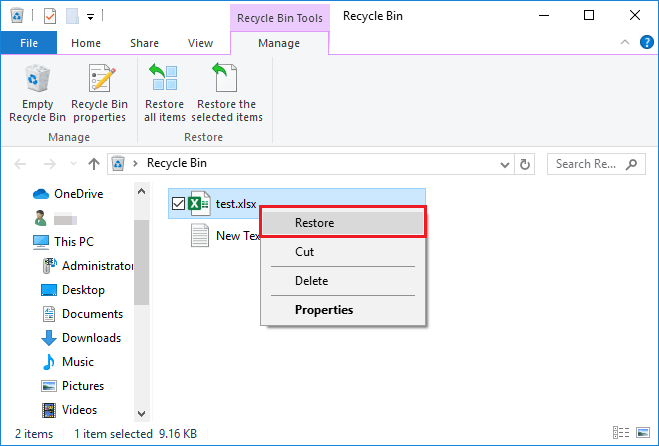Effortlessly Recover Deleted Excel Sheets: Quick Guide

Understanding Excel File Structure

Before we dive into the recovery methods for deleted Excel sheets, let’s first understand how Excel files are structured. Excel workbooks (.xlsx files) contain sheets or worksheets which act as individual pages within the workbook. Understanding this structure can significantly help in recovering a deleted sheet:
- Workbook: This is the main Excel file that contains all your sheets, charts, and data.
- Worksheets: These are individual tabs within the workbook where you input data, create charts, or perform calculations.
- Data: Each cell in a worksheet holds data, which can be numbers, text, formulas, or references to other cells.
- XML Structure: Modern Excel files (.xlsx) are actually a compressed archive of XML files, which makes recovery possible even if the user interface doesn’t show the sheet.
💡 Note: Excel's XML structure allows recovery of deleted sheets because the file essentially stores a database of your workbook's content, including hidden or deleted elements.
Backup Strategies for Excel Sheets

Backup is your first line of defense against data loss. Here are some effective strategies to ensure you have backups:
- AutoSave: Ensure AutoSave is enabled within Excel, which will save your workbook periodically.
- Version History: Utilize the ‘File History’ feature if you are working in OneDrive or SharePoint, allowing you to revert to previous versions of your workbook.
- Regular Backups: Schedule backups or manually save copies of your workbook at regular intervals.
- Cloud Storage: Use cloud storage like Google Drive, Dropbox, or OneDrive, which often automatically backup your files.
| Backup Method | Pros | Cons |
|---|---|---|
| AutoSave | Automatic recovery from crashes, easy to revert changes. | Might not save if the crash occurs between saves. |
| Version History | Access to multiple versions, works well with collaboration. | Requires internet access, storage space can be an issue. |
| Regular Backups | Control over frequency, local backups are reliable. | Time-consuming, requires discipline. |
| Cloud Storage | Automatic backups, data recovery from anywhere. | Depends on internet connection, privacy concerns. |

Immediate Actions After Deletion

If you’ve accidentally deleted an Excel sheet, take these immediate steps:
- Check the Deleted Items Folder: If you’ve recently deleted the sheet, it might still be in Excel’s recycle bin or ‘Deleted Items’ folder.
- Undo Deletion: Use
Ctrl+Z(Windows) orCmd+Z(Mac) immediately after deletion. - Use AutoRecover: If AutoRecover is enabled, it might have saved an interim version of your workbook.
🚨 Note: Always try the simple methods first. The faster you react, the better your chances of recovering the deleted sheet.
Advanced Recovery Methods

When basic methods fail, here are some advanced techniques to recover deleted Excel sheets:
Software Tools: Use data recovery software like Recuva, EaseUS Data Recovery Wizard, or Disk Drill which can scan and recover deleted files from your disk.
XML Editing: If you have some technical know-how, you can manually edit the XML files within the .xlsx file:
- Rename the .xlsx file to .zip and open it with a zip file extractor.
- Navigate to the ‘xl/worksheets’ folder where the sheets are stored in XML files.
- Locate the file corresponding to the deleted sheet, often named ‘sheetX.xml’.
- Modify the ‘xl/workbook.xml’ file to include the reference to the deleted sheet if needed.
- Save the changes, rename back to .xlsx, and open in Excel.
Professional Recovery Services: If the data is critical and all else fails, consider professional data recovery services.
🔧 Note: Advanced recovery methods might require some technical skills or specialized software. Be cautious as incorrect steps can worsen the situation.
In our digital age, Excel has become an indispensable tool for businesses, students, researchers, and more. Accidentally deleting an Excel sheet, which might contain hours or even days of work, can be disastrous. However, with a combination of backup strategies, immediate actions, and recovery methods, the chances of recovering that lost data are significantly improved. While the ease of recovery depends on the size of the file, how recently the sheet was deleted, and your immediate actions after deletion, the steps provided in this guide can give you a fighting chance. Remember, prevention through regular backups is always better than trying to recover after a mishap. With this knowledge, you’re now better equipped to handle both the prevention and recovery of deleted Excel sheets, ensuring that your data remains safe and recoverable.
How can I tell if AutoRecover is enabled in Excel?

+
In Excel, go to ‘File’ > ‘Options’ > ‘Save’. Look for the option ‘Save AutoRecover information every X minutes’ and make sure it is checked.
Can I recover a sheet that was deleted a long time ago?

+
Recovery becomes increasingly difficult the longer it has been since the deletion. However, with the right tools and if no new data has overwritten the deleted data on the storage device, it’s still possible.
What should I do if I cannot find the deleted sheet in the .zip file?

+
If the sheet isn’t visible in the .zip file, it might have been physically deleted from your system or overwritten. In such cases, try data recovery software or consider professional services.
Can I recover sheets from an Excel file saved on a cloud service?

+
Yes, if the cloud service supports version history (like OneDrive or Google Drive), you might be able to revert to an earlier version of the file where the sheet still exists.